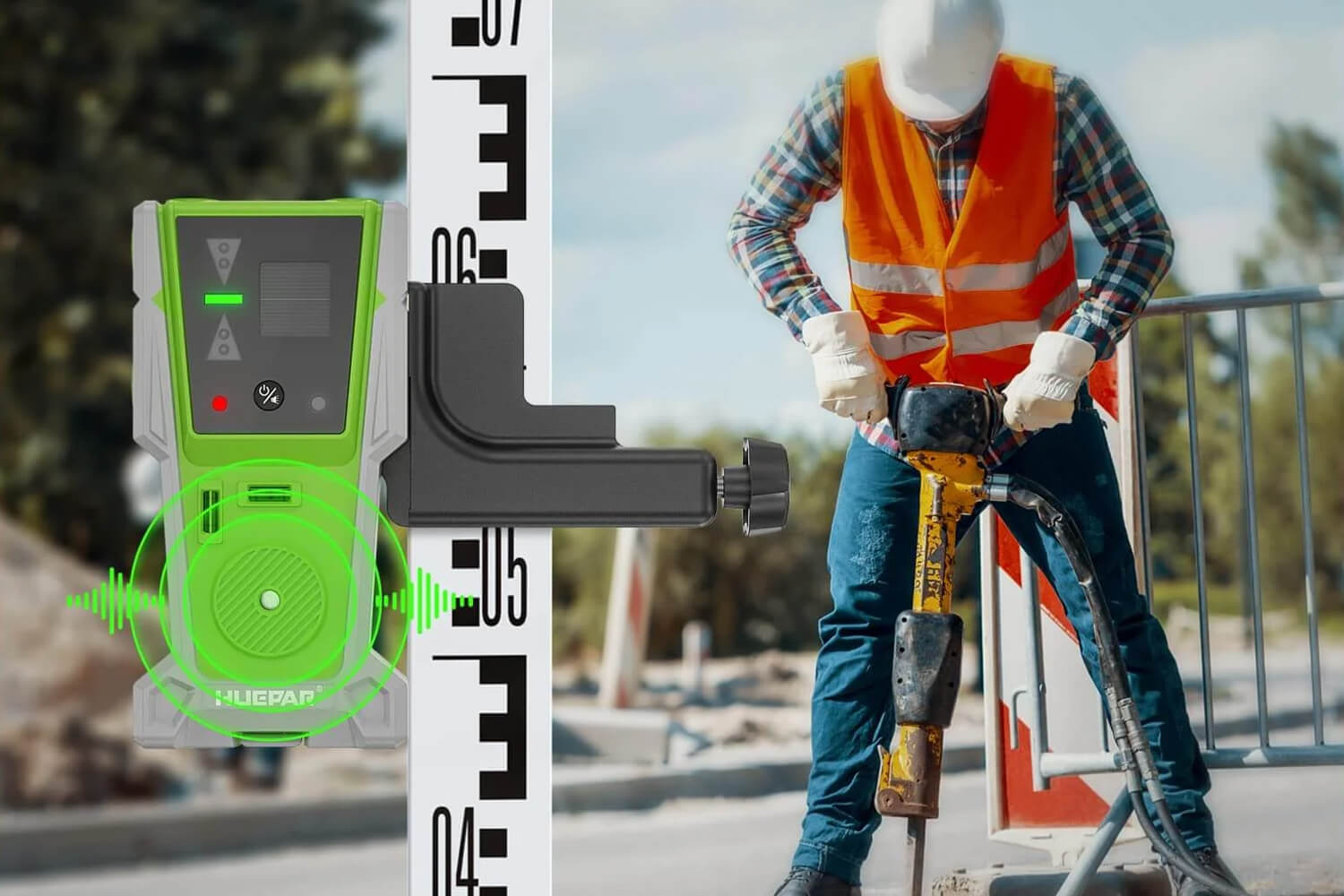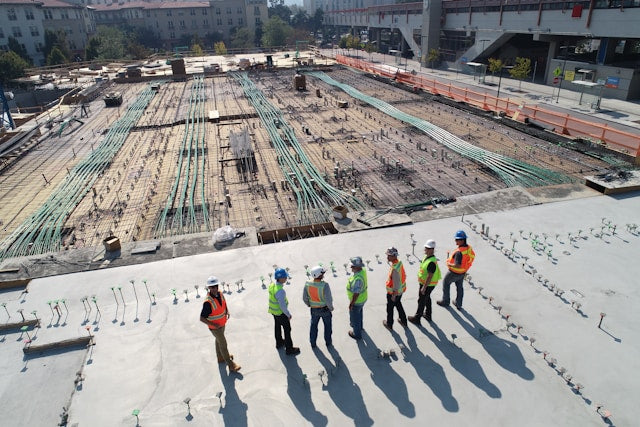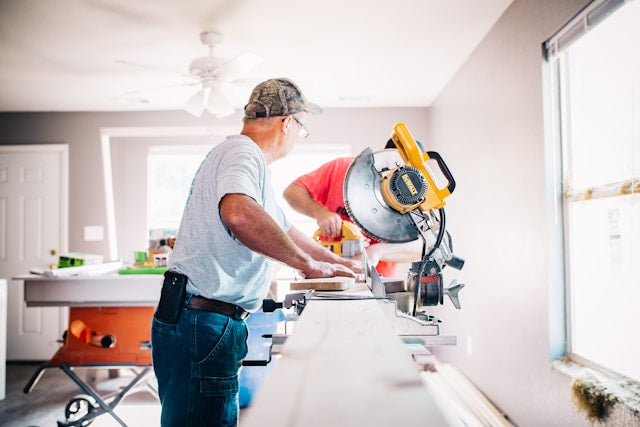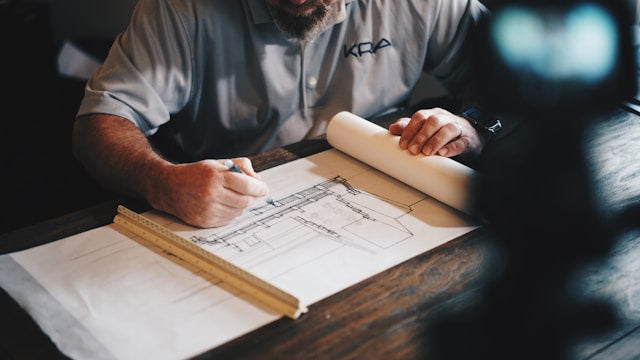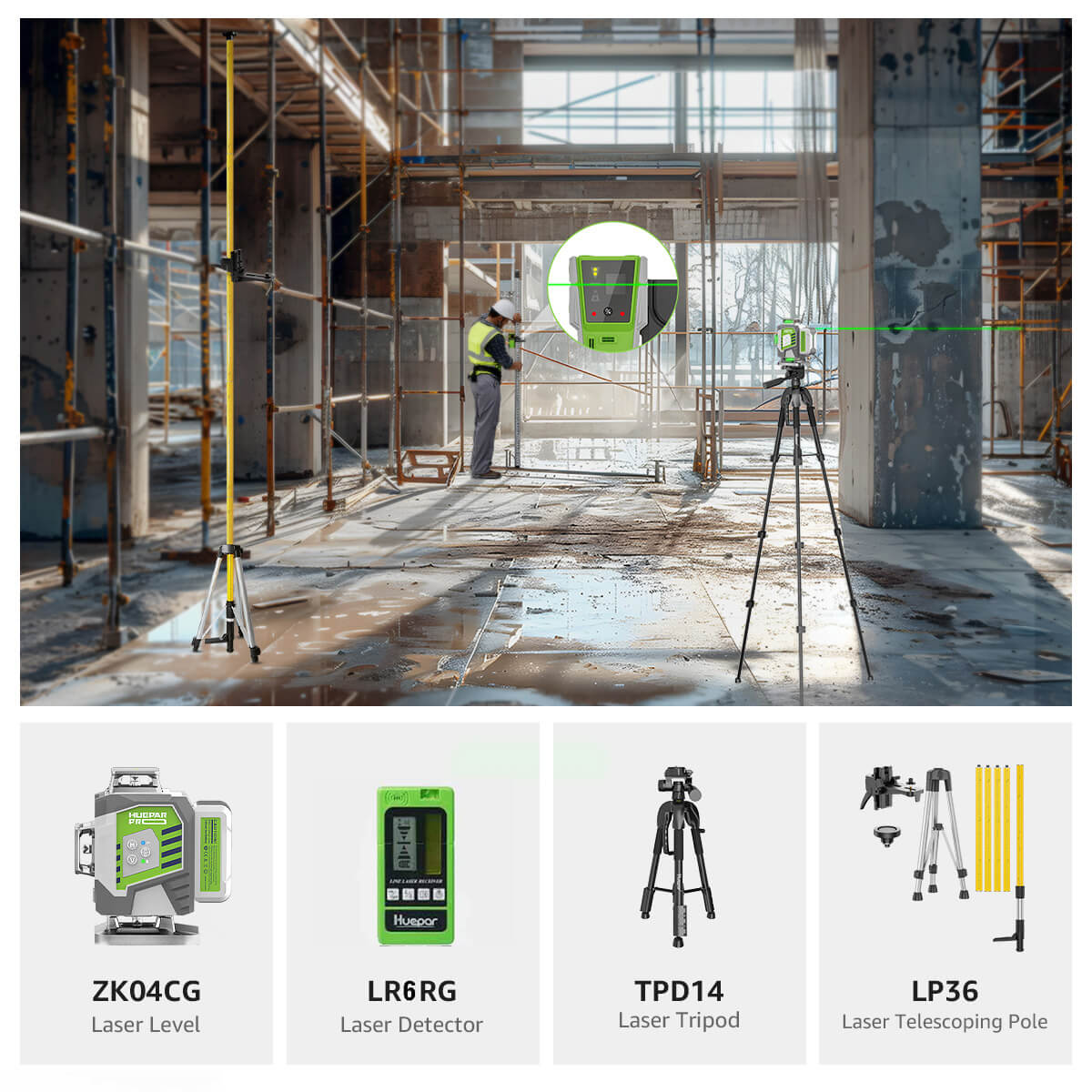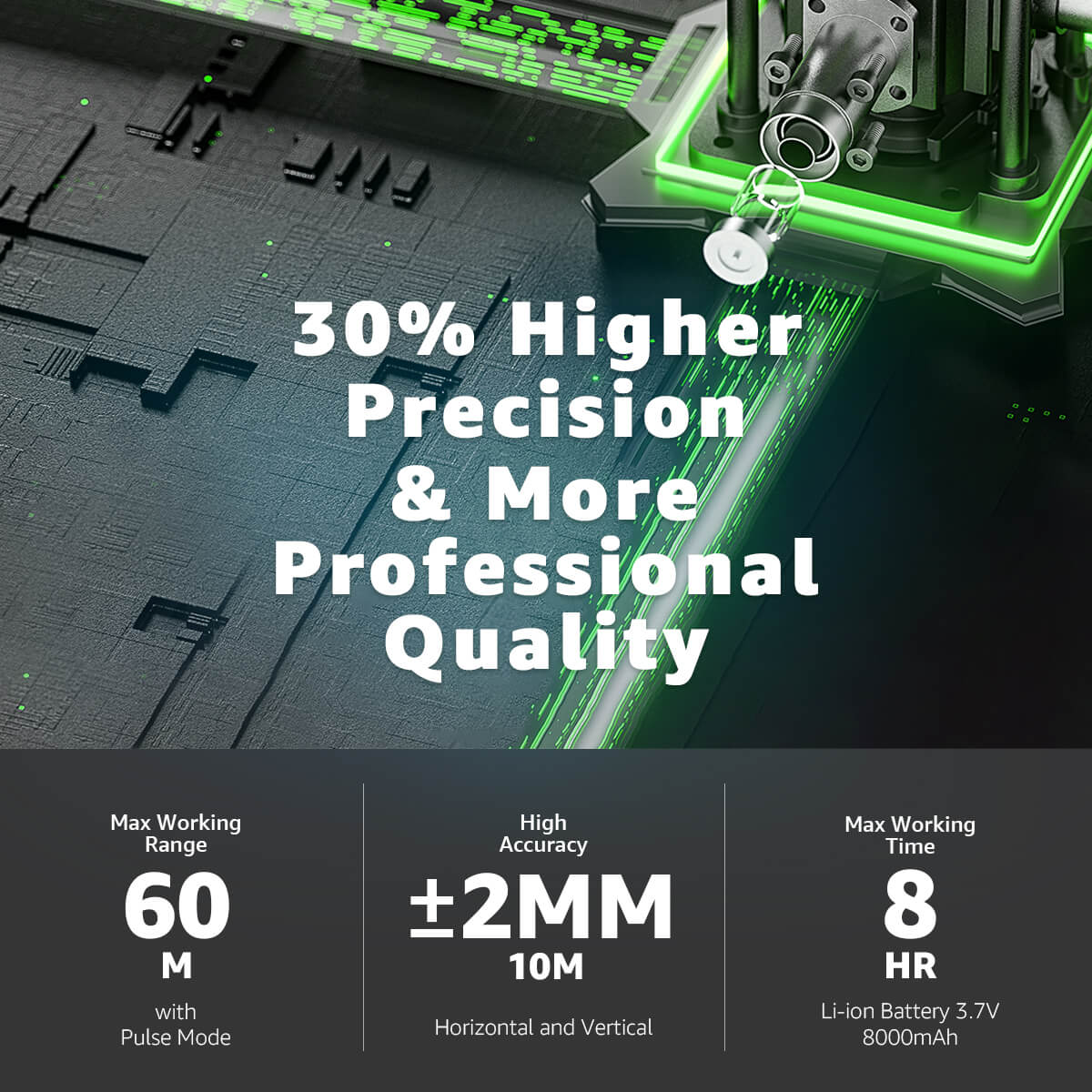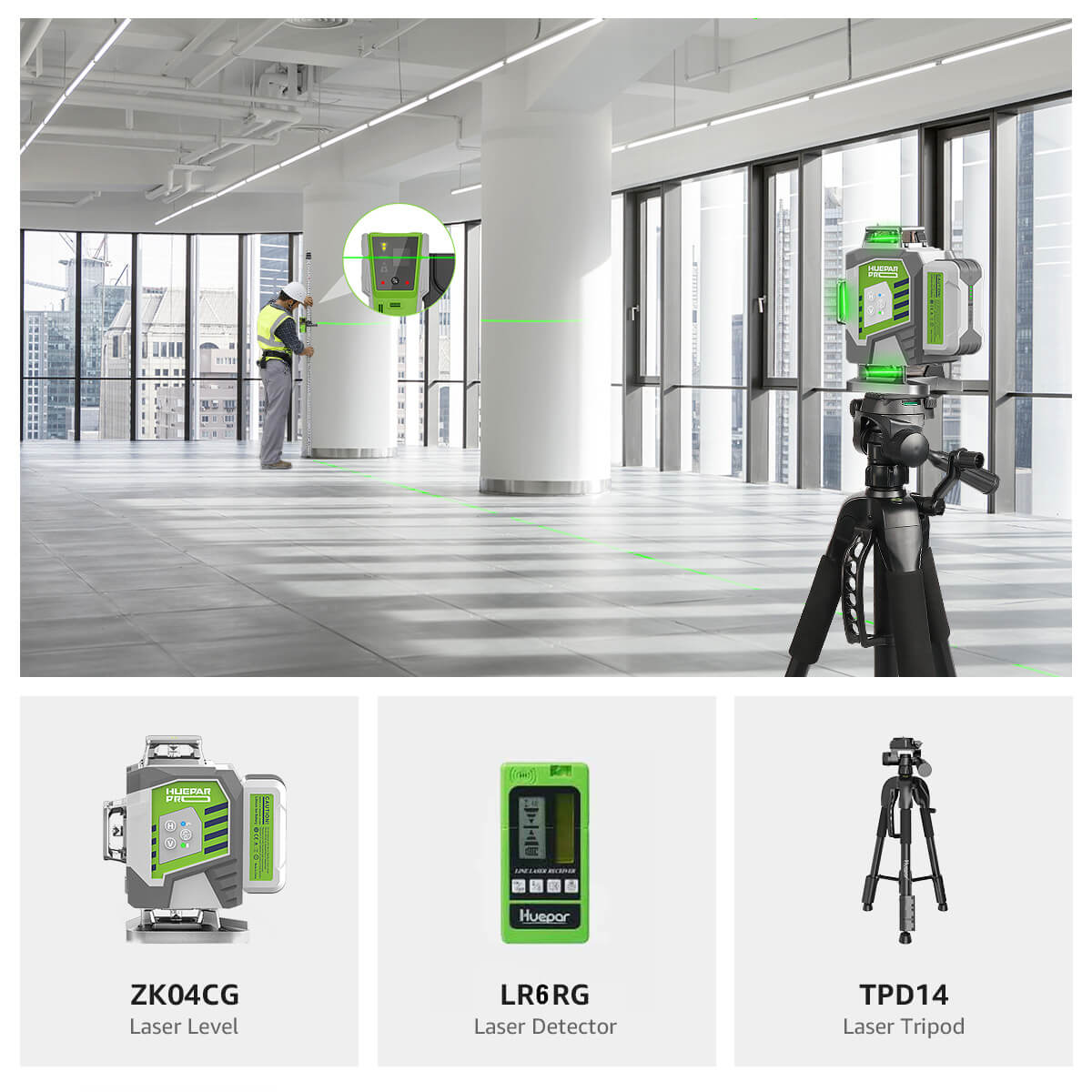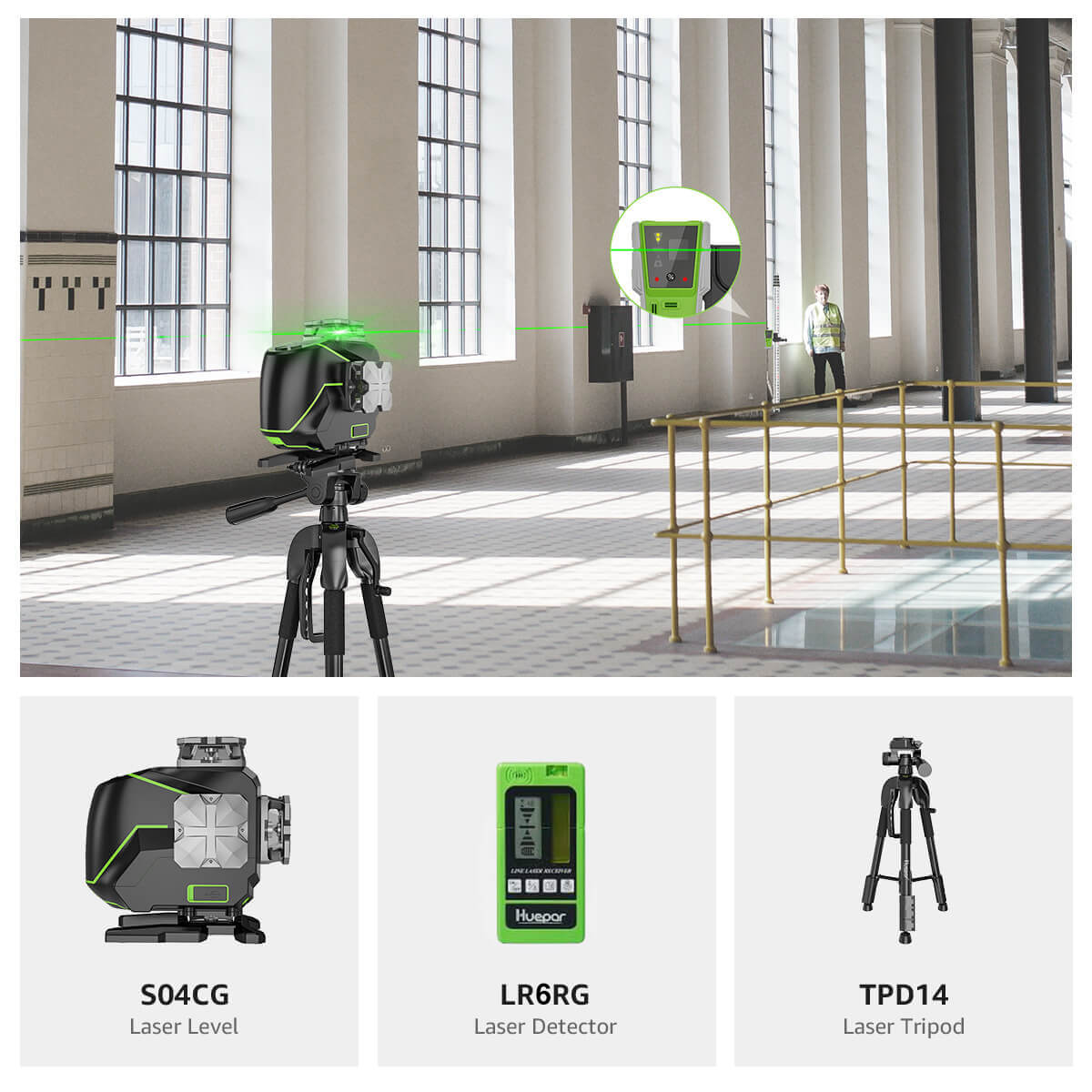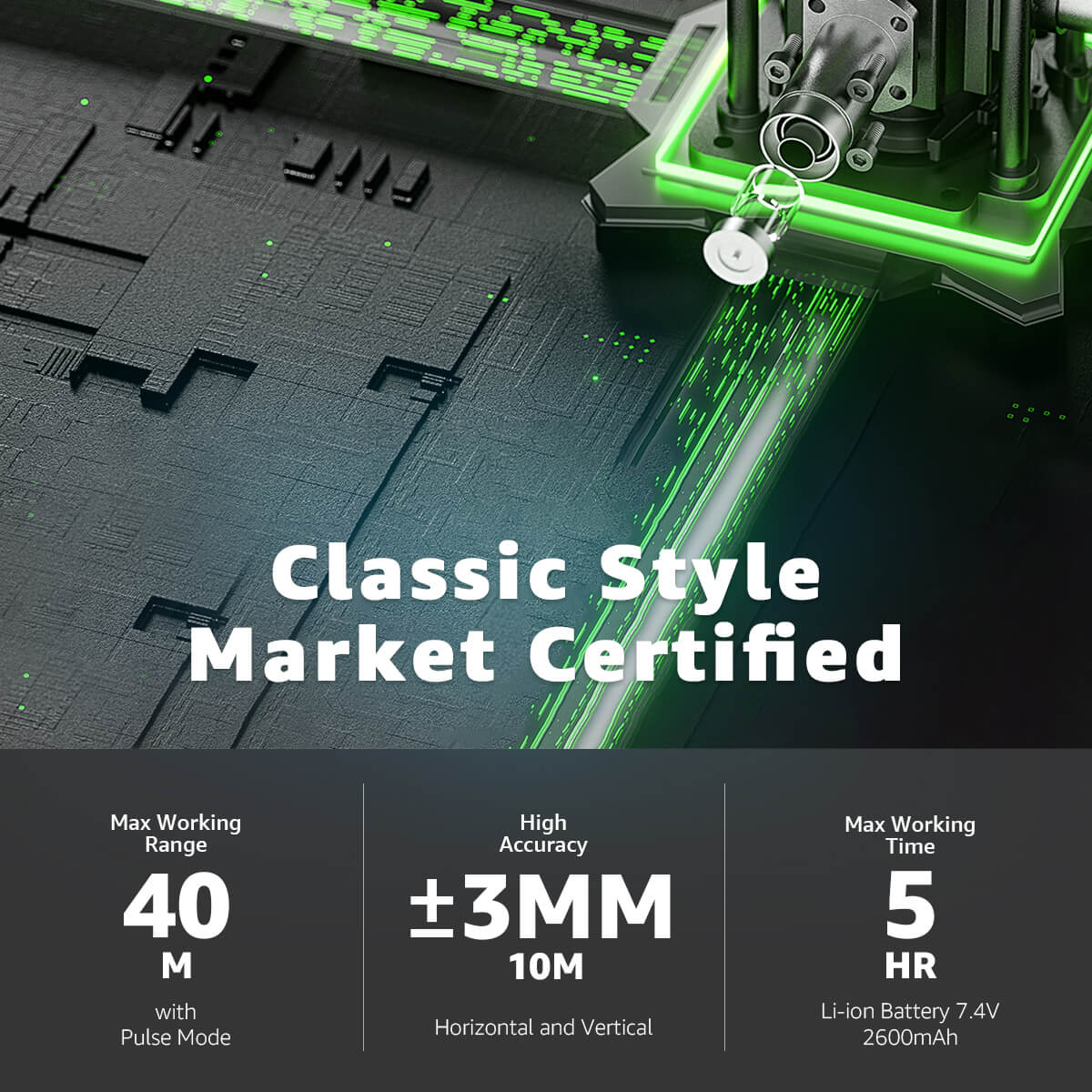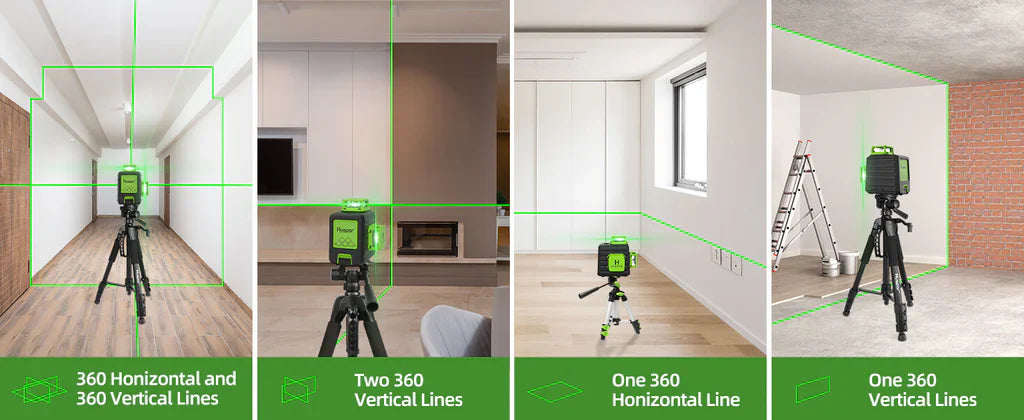
Understanding Tripods for Laser Levels
Introduction
If you want your laser level to work better and give you more accurate results, using a tripod is a smart choice. A tripod is a three-legged stand that holds your laser level steady and at the right height. It helps you get clear and straight lines, even on bumpy or sloped ground. In this guide, we’ll explain what a tripod is, how to set it up and use it, how to take care of it, and why it’s such a helpful tool for many jobs.

What Is a Tripod for Laser Levels?
A tripod for laser levels is a three-legged stand that holds a laser level in place. It helps keep the laser steady and level so you can take accurate measurements. The tripod gives you a strong and adjustable base to work from. Here are the main parts of a tripod:
-
Legs: Most tripods have three legs. These can be either fixed or adjustable. Adjustable legs let you change the height and work better on uneven ground.
-
Head: This is the top part of the tripod where you attach the laser level. It usually has a flat surface or a screw to hold the laser level tightly in place.
-
Points (or Shoes): These are the ends of the tripod legs that touch the ground. Some have spikes for outdoor use, while others have rubber tips for indoor floors.

There are two main types of tripods for laser levels:
-
Adjustable-leg Tripods: These let you change the leg lengths to raise or lower the height. They are good for working on different surfaces or rough ground.
-
Fixed-leg Tripods: These have legs that stay at the same length. They are lighter and easier to carry, so they work well indoors or when you need something portable.
Tripods are made from different materials like steel, aluminum, fiberglass, or wood. Aluminum and fiberglass are popular because they are strong but still lightweight.
How to Set Up a Tripod for Laser Levels
Setting up your tripod the right way helps you get accurate results. Here’s how to do it:
-
Check Compatibility: Before you use the tripod, make sure it fits your laser level. Look at the laser level's instructions to see if the tripod will work with it.
-
Look at the Ground: Think about the surface where you’re working. If it’s soft or uneven, you may need to adjust the legs or use stabilizers to keep the tripod steady.
-
Spread the Legs Evenly: Set the tripod legs in a triangle shape, with equal space between them. This keeps the tripod from tipping over.
-
Make It Stable: Press the leg points firmly into the ground. Push down a bit to make sure the tripod doesn’t move or wobble.
-
Level the Top: Use the built-in bubble level or adjust the legs to make the tripod head flat. This step is important so your laser level gives a straight and accurate beam.
By setting up your tripod the right way, you’ll have a solid base for your laser level. This helps you get clear, accurate measurements for any project.

How to Use a Laser Level on a Tripod
After setting up your tripod, the next step is to attach the laser level to the top of the tripod. Make sure it’s tightly secured so it doesn’t move while you’re working.
If your laser level needs to be calibrated, follow the steps in the user manual. Many laser levels can level themselves, so you might not need to do this step.
In bright sunlight, it can be hard to see the laser line. Some laser levels make a beeping sound when they are level. This sound can help you know when it’s set correctly.
As you use the laser level, make small marks on the wall or other surfaces to show where the level line is. These marks will help you do things like hang pictures, install cabinets, or lay tiles in a straight line.
When you're done, be sure to turn off the laser level. This helps save battery life and keeps the laser from shining in someone’s eyes by mistake.
Taking Care of Your Tripod for Laser Levels
Taking good care of your tripod helps it last longer and work better. Here are some simple tips:
Clean It Before and After Use
Always clean your tripod before and after using it. Wipe off any dirt, dust, or water with a damp cloth or soft brush. Keeping it clean helps stop rust and wear.
Keep the Joints Moving Smoothly
Tripod joints can get stiff over time. To keep them moving easily, put a little silicone-based oil or lubricant on the leg locks and other moving parts. Then move the legs in and out to spread the oil.
Protect It When You Travel
When you're carrying your tripod, try not to bump it or drop it. Use a case or padded bag to protect it. Don’t put heavy things on top of it, and try to avoid shaking it too much.
Store It the Right Way
Keep your tripod in a dry place, away from heat, sunlight, or moisture. If you won’t use it for a while, store it with the legs slightly extended or hang it up to avoid damage.
By following these easy steps, your tripod will stay in good shape and work well every time you use it with your laser level.
Benefits of Using a Tripod with Laser Levels
Using a tripod with your laser level can make your work more accurate, steady, and easy to do. It’s a helpful tool for many types of job sites.
Better Accuracy
A tripod keeps your laser level steady and flat. This helps avoid shaking or movement that can mess up your measurements. It’s especially useful when you're working on bumpy or sloped ground.
Strong and Steady
A tripod keeps your laser level at the same height the whole time you’re working. This makes sure your measurements stay the same from start to finish. It’s important for jobs that need to be very exact.
Easy to Use
Tripods are made to be simple to set up. Many have quick-release buttons and legs that can be adjusted, so you can get the laser level in the right spot fast. This saves time and effort, especially on big projects.
Works in Many Places
Tripods can be used almost anywhere—on construction sites, in backyards, or inside homes. They work well on different surfaces and in different conditions, so you can rely on them wherever you are.
Conclusion
Using a tripod with your laser level makes your work easier, faster, and more accurate. It keeps the laser steady, helps you measure correctly, and works well in many places. By learning how to set up and care for your tripod, you can use it again and again for all kinds of projects. Whether you're hanging shelves or working on a big job site, a tripod is a simple tool that can make a big difference.
